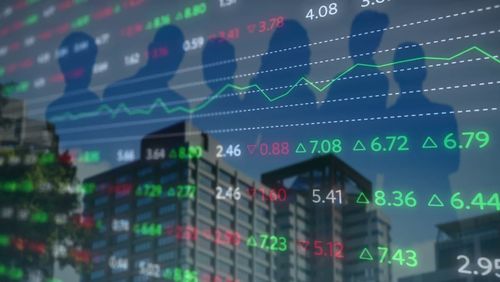Analysts suggest that a combination of slowing economic growth and sticky inflation could put the Federal Reserve in a bind, potentially leading it to refrain from cutting interest rates this year. According to a top equity strategist at Stifel, the U.S. faces what some forecasters call the economy’s worst-case scenario in 2025—a situation that could deliver a 10% blow to stock prices.
Barry Bannister, Managing Director and Chief Equity Strategist at Stifel, was one of the few Wall Street bears earlier this year. He predicts the S&P 500 will drop to the 5,000 range by the end of 2025.
He believes the U.S. economy risks slipping into a mild stagflation period in the second half of this year, reminiscent of the 1970s, when both prices and unemployment surged significantly.
While most investors broadly expect 2025 to bring robust U.S. economic growth and cooling inflation, Bannister warns that early signs of stagflation are already emerging.
For instance, inflation has picked up in recent months. In January, consumer prices rose 3% year-over-year, exceeding both the prior reading and market expectations of 2.9%.
Investors have expressed concerns about inflation in recent months, even though the pace of price increases has slowed considerably since mid-2022.
Bannister notes that some of this unease stems from Trump’s economic policies, particularly his tariff plans, which forecasters warn could see producers pass higher costs onto consumers.
“I think it’s foolish for people to assume inflation will fall back to 2%. It won’t get there unless there’s a recession,” Bannister said, pointing to the impact of tariffs. “Tariffs largely offset progress in fighting inflation.”
In a report, Stifel analysts projected that core personal consumption expenditures (PCE) inflation—the Fed’s preferred gauge—will “stall” at around 2.75% in 2025, above the Fed’s 2% target.
Bannister argues that higher inflation is also bad news for economic growth because it affects consumers, whose spending accounts for about 70% of U.S. GDP. Meanwhile, households are already showing signs of pulling back, with Commerce Department data indicating a nearly 1% drop in retail sales in January.
Moreover, growth could face hurdles this year as productivity gains have trended downward for much of the past year. Worker output in the nonfarm sector grew by just 1.5% in the fourth quarter, far below the 7% growth rate seen at the peak of productivity in 2020.
“There are a lot of armchair economists assuming productivity will soar,” Bannister said. “They’re ignoring the cyclicality of productivity, and it’s already in decline.”
The result could be a vicious feedback loop: declining productivity hampers inflation control, as businesses getting less return from employees may raise prices. At the same time, high inflation could deter the Fed from cutting rates, which would hurt economic growth. Bannister added that he doesn’t expect the Fed to lower rates further this year.
All these factors spell trouble for the markets, where investors have been pricing in sustained economic strength and lower borrowing costs.
Given historically high valuations, Bannister believes the stock market is ripe for a correction. He anticipates that the dual pressures of slower growth and higher rates will trigger a 10% sell-off in the second half of the year.
“I expect the S&P 500 to fall to 5,500 by year-end,” he said. “The combination of slowing growth and sticky inflation will trap the Fed.”
Other forecasters have also flagged stagflation risks due to uncertainty surrounding inflation and trade policy outlooks.
Mark Malek, Chief Investment Officer at Siebert Financial, said that while stagflation isn’t his base case for 2025, he does see it as a risk to the U.S. economy. Tariffs could drive up prices, putting enough pressure on consumers to spark a slowdown.
BCA Research noted that, with economic growth slowing, inflation is likely to hover near 3% throughout 2025, raising the risk of a “mini-stagflation” event. This could be triggered by stagnant labor supply growth, slowing productivity, and rising prices.
When considering shares, indices, forex (foreign exchange) and commodities for trading and price predictions, remember that trading CFDs involves a significant degree of risk and could result in capital loss.
Past performance is not indicative of any future results. This information is provided for informative purposes only and should not be construed to be investment advice. Trading cryptocurrency CFDs and spread bets is restricted for all UK retail clients.









